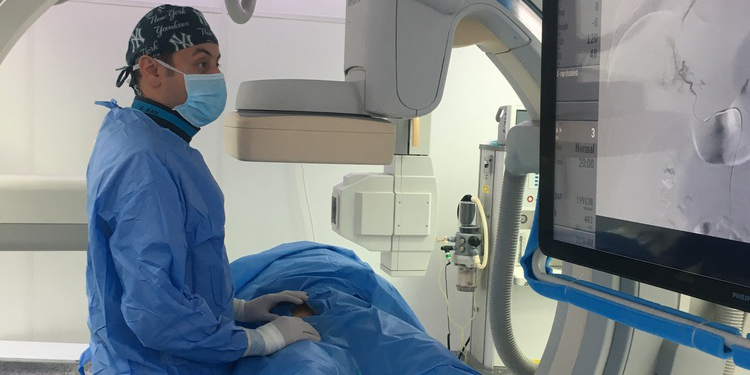
Overview
A Revolutionary Approach to Healthcare
Imagine a World Where Complex Medical Procedures Can Be Performed with Minimal Invasiveness
Imagine a world where complex medical procedures can be performed with minimal invasiveness, leading to faster recovery times and fewer complications. This is the reality of interventional radiology, a field that has revolutionized modern medicine.
What is Interventional Radiology?
Interventional radiology is a minimally invasive medical specialty that uses imaging techniques to guide the delivery of treatment directly to the affected area. Unlike traditional surgery, which often involves large incisions and lengthy recovery periods, interventional procedures are performed through tiny punctures in the skin.
The Advantages of Interventional Radiology
- Minimally Invasive Procedures: Interventional procedures involve smaller incisions, reducing the risk of infection, scarring, and post-operative pain.
- Faster Recovery Times: Patients often experience shorter hospital stays and quicker recovery periods, allowing them to return to their normal activities sooner.
- Reduced Pain and Discomfort: Minimally invasive procedures typically involve local anesthesia or sedation, minimizing discomfort during and after the procedure.
- Improved Patient Outcomes: Interventional radiology can lead to better patient outcomes, including increased survival rates and improved quality of life. It can be used to treat a wide range of conditions, such as cardiovascular disease, cancer, and vascular disorders.
- Reduced Healthcare Costs: By reducing hospital stays and the need for additional treatments, interventional radiology can be a cost-effective treatment option.
Real-World Examples
- A Stroke Survivor's Second Chance: A patient suffering from a stroke received a life-saving procedure to remove a blood clot from their brain. Thanks to interventional radiology, they were able to regain their mobility and speech.
- A Cancer Patient's Hope: A patient with liver cancer underwent a minimally invasive procedure to destroy the tumor. The procedure was successful, and the patient is now cancer-free.
The Future of Interventional Radiology
The future of interventional radiology is bright, with emerging technologies promising even greater benefits. Robotic-assisted surgery and artificial intelligence are poised to further enhance the precision and effectiveness of these procedures. Additionally, personalized medicine approaches are being explored to tailor treatments to individual patient needs.
Conclusion
Interventional radiology is a powerful tool that is transforming healthcare. By offering minimally invasive, targeted, and effective treatments, this field is improving patient outcomes and saving lives. As technology continues to advance, we can expect even greater breakthroughs in the field of interventional radiology.

